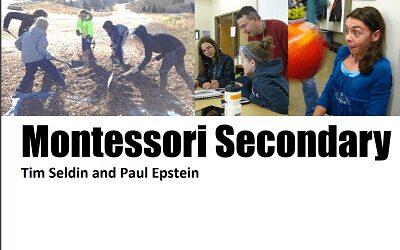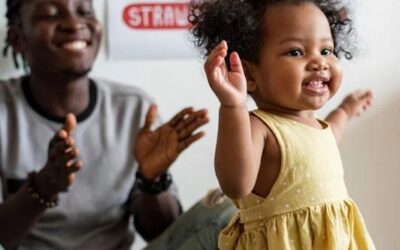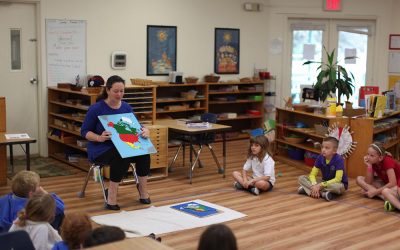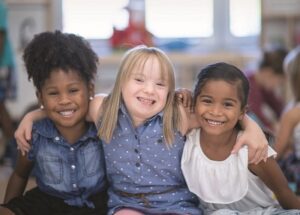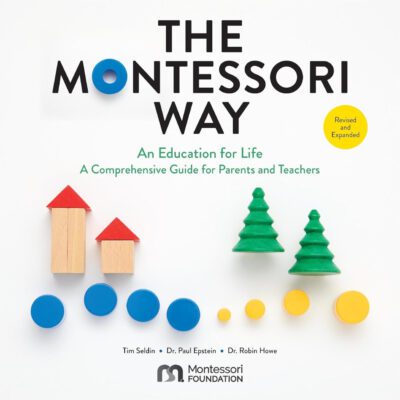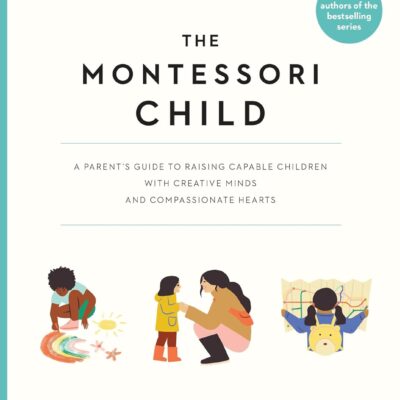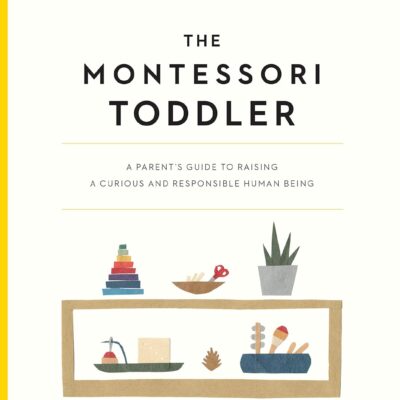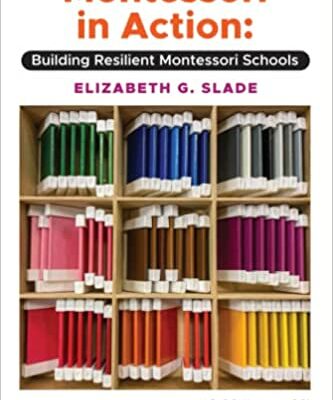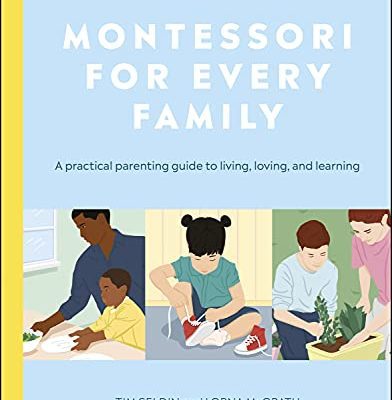More and more students with a diversity of unique behavior and learning needs are enrolling in Montessori classrooms in independent, public, and charter Montessori schools. And more and more Montessori school leaders and classroom teachers are expressing their concerns:
“I don’t know how to work with these kids.”
“There are just too many challenges in my classroom.”
“My teachers will quit if I put these students in their classrooms.”
“Is Montessori a good fit, the right place for these kids?”
As Montessori educators, we are not alone. According to the National Center for Education Statistics, students 3-21 years of age receiving special education services under the Individuals with Disabilities Education Act (IDEA) rose to 14% between 2012-2019. A full percentage increase across all public education settings.1
This statistic, however, does not report on the largest group of students who challenge us: those not formally identified through the IEP process. This group leads teachers to say, “50% of my class is special needs.” This large group of diverse, unique learners, at every level, raises questions for the educational community, including Montessori.
A brief history:
Requirements for free appropriate public education, or FAPE, and least restrictive environment, or LRE, expanded in IDEA (2004) (Individuals with Disabilities Education Act). This law, combined with increased funding, and Head Start mandates for serving a percentage of students with disabilities, led to an increase in inclusive education programs. In 2009, a joint statement released by The Council for Exceptional Children: Division for Early Childhood (DEC) and the National Association for the Education of Young Children (NAEYC) released a joint statement that identified three components of inclusion: access, participation, and support for all children.
The latest report from the DEC lists five priority issues needing attention in its Priority Issues Agenda 2018.
• High-quality Inclusion
• Overcoming implicit bias
• Appropriate response to behavior
• Create strong family partnerships
• Prepare a highly effective workforce
1 National Center for Education Statistics. https://nces.ed.gov/
What does Inclusion mean?
Inclusion is more than a place… Inclusion means that all young children, regardless of ability, are given an authentic opportunity to fully participate in the experiences any child might have. The evidence clearly shows that all children developing within intentionally inclusive cultures simultaneously acquire a sense of belonging and membership, cultivate positive social relationships and friendships, and reach their full potential more comfortably. (DEC, 2018).
An inclusive classroom can benefit all students at every level. Universal best practices:
• Differentiated instruction that increases student engagement
•Academic supports that help each student access the curriculum
•Behavioral supports that help maintain a positive learning environment for everyone
• Respect for diversity that creates a welcoming environment for all (Inclusive schools, 2015)
• Serve, support, and educate every student, regardless of formal designation of “special needs,” as well as the many students who challenge us for various reasons (economic status, trauma, sensory issues, cultural differences, English learners, etc.).
With the increase in students who challenge us, the trend toward inclusive classrooms, the move toward most students being served most of the time in the general education classroom, and the use of multi-tiered systems of support in these classrooms, a close look at the obstacles in implementation might provide some guidelines for serving these students.
The Obstacles:
A review of the literature points to the two most significant obstacles: attitudes of school leaders and classroom teachers and teachers who are not adequately prepared with the education, knowledge, training, or skills to feel confident in their ability to competently meet the needs of all of their students.

Over the past thirty years, studies have demonstrated the significance of teachers’ attitudes in implementing inclusive classroom practices. Examining variables is consistent regardless of setting, levels taught, years of classroom experience, and acceptance of the model.
Across studies, teacher attitude has been found to determine willingness to work with diverse learners, use instructional practices that benefit all students, and correlate with student achievement.
Firmly held beliefs, attitudes, biases, and preconceived notions about diverse learners are compounded by a lack of expectation for self-reflection. Some of the common misconceptions are: 1) that students with differences in behavior and learning should be taught by special education staff outside of the regular classroom, 2) that the curriculum must be modified, and 3) that supporting students with behavior difficulties takes too much time away from other students. Negative attitudes and beliefs contribute to a lack of confidence or self-efficacy, feelings of not knowing how to provide for a variety of learners, lack of support from school administrators, and more significant stress and “burn-out.”
One study of interest to the Montessori community compared Montessori and Non-Montessori early childhood teachers’ attitudes toward inclusion (Danner, 2015). Both groups indicated a similar value of, and support for, inclusive education. However, non-Montessori credentialed teachers felt they had a greater understanding and knowledge of the variety of diverse learners, with most having completed some special education coursework as part of their teacher preparation program. The Montessori credentialed teachers, however, felt less able to provide an inclusive environment, to be able to modify materials if needed, and contribute to a sense of belonging for each student. With little prior knowledge and limited exposure to teaching in an inclusive classroom during Montessori teacher preparation, the authors hypothesized that Montessori teachers might not recognize the alignment between Montessori education and recommended best practices for inclusive classrooms.

Montessori Could Be a Perfect Model for Inclusive Classrooms:
If we reflect on “our history” as Montessori educators, let’s remember what set Dr. Montessori on the path of scientific pedagogy. Her response to her early work with students considered “deficit” was curiosity and inquiry. She searched for answers, and with knowledge, observation, experimentation, and patience, she developed an education system founded on respect for each individual child.
Further reflection on the foundations of this system of education, meant to respond to the needs of all children, reveals:
• A child-centered system that “follows the child” with the child’s needs before all else.
•An environment prepared to meet students’ needs in all aspects.
• A three-year curriculum using manipulative multi-sensory materials.
• A mixed-age group of students so that each learns at their own pace.
• Differentiated instruction with expectations, goals, and plans for each student.
•A classroom community built on trust, support, social skills, and belonging for all.
This is a system, a philosophy, a curriculum, and a practice that naturally includes all the best of special education and inclusive classroom practices. Those practices that are our 100+ year tradition are now implemented in inclusive classrooms at every level and in every setting in non-Montessori classrooms worldwide. The language might be slightly different, but it is the same in practice.
Montessori IS the Model of Inclusion:
If Montessori is a model for inclusion, what can we learn from the broader education landscape to guide us toward full implementation?
It starts with attitude. Dr. Montessori calls on us to engage in self-reflection regularly. How many of us are willing to take a long, hard look at our attitudes toward students who challenge us? Are we willing to question our beliefs, biases, preconceived notions, and maybe most difficult expectations of our students, how they should act and learn, and what our Montessori classrooms need to be?
Can we come to see differences rather than disabilities and deficits? And see neu- rodiversity as naturally occurring and contributing to the richness of our Montessori classrooms?
The need for increased teacher education and professional development for working in inclusive classrooms is well established. Montessori and non-Montessori educators need greater knowledge, skills, and support to succeed in their classrooms. (Gaines, 2017). When School leaders see the value and benefit of inclusive classrooms and support teachers with ongoing professional development and coaching, they will create a school-wide culture of inclusion. That will include using Universal Design Learning, and a Multi-tiered System of Support to provide universal best practices for all students, focused support for behavior and learning, and a team approach for systematic, individualized interventions as needed.
Many in the broader education world are calling for improved teacher preparation programs that prepare teachers to create a responsive social-emotional environment. This objective provides a sense of belonging for all, differentiated instruction as a matter of course, and understanding and implementing responsive guidance in managing their classrooms. Is it time for Montessori teacher preparation programs to look at their instruction? Perhaps integrating universal teaching practices and techniques for differentiating instruction while learning Montessori materials’ presentations would give new teachers greater confidence in their ability to support diversity. With child development, observation, and positive, respectful classroom management as priorities, would we have an opportunity to re-examine the foundations of the Montessori system and implement them in the inclusive Montessori classroom?

The Future:
As we contemplate our place in education, there is much we can learn from outside of the Montessori community. But there is so much we have to share as inclusive classrooms become the norm. An exchange of knowledge, research, understanding, and experience can support us on the path of honoring and respecting differences and seeing all individuals as unique and valuable members of our community. We can work toward a peaceful world where everyone belongs.
References
Danner, N. & Fowler, S. (2015). Montessori and non-Montessori early childhood teachers’ attitudes toward inclusion and access. Journal of Montessori Research, 27-41.
Division of Early Children. (n.d.). https://www.dec-sped.org/priorityissues.
Gaines, T. & Barnes, M. (2017). Perceptions and attitudes about inclusion: Findings across grade levels and years of teaching experience. Cogent Education, 1-11.
Shanks, P. (2014). Building the Inclusive Montessori School. NAMTA Journal, 5-36.
Stauble, K. (2009). Teacher attitudes toward inclusion and the impact of teacher and school variables. https://doi.org/10.18297/etd/1375: Theses and Dissertations Paper 1375.

